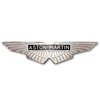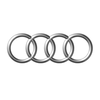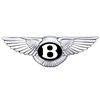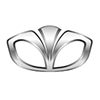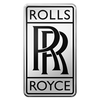20 checks you should do before buying a secondhand car
It doesn’t matter if you’re looking at a private sale or a second-hand car from a dealer. You should always check over the car in question. Sure, they may advertise that it’s in perfect condition and there’s no work needed, but is it true?
Where do you start though? If you’re reading this, you probably aren’t a mechanic. But you can still help yourself avoid buying a nightmare car by doing a thorough inspection on your own. It’s not overly complicated, doesn’t require tools, and only takes about 20 to 30 minutes.
Vehicle History Report
Always, always, always get a vehicle history report. Choose a widely known vehicle history report provider like Carfax that details recall information, accident reports, and service visits to the dealership. In the UK, you can also access MOT information for vehicles since 2005, including why they failed an inspection.
If there’s anything questionable or outright scary about the vehicle history, choose a different car!
Headlamps
Check that the headlamps operate as they should. Just turn them on and check that they work on low-beam and high-beam. If they do, great. If there’s a light not working, consider the repair cost. Some headlamps are LED or high-intensity discharge (HID) headlamps, which could be hundreds of pounds to replace.
Emergency Brake/Parking Brake
You want to be able to stop in an emergency, and you don’t want your car to roll away on you. If there’s a hand brake in the car, pull it up until it engages. Make sure it holds the car in place and isn’t at its full extension. If the car rolls while it’s engaged, there’s a problem, although probably just an adjustment. Release the hand brake and make sure the car rolls freely again, ensuring the brake isn’t seized. If it’s a foot-operated parking brake, test it the same way but, obviously, with your foot.
Taillamps
Quick and easy, like the headlamps, check that the taillamps operate when the headlights and running lights are on. It’s a small thing that can be a pain if you fail your MOT because of it. While you’re at it, test that the brake lights come on when you press the brake pedal and go off when the pedal is released. It’s easiest to check these lights if you’re backed up close to a wall.
Signal Lights
One of the easy checks to do is the signal lights. With the ignition turned on, make sure the left side and right side flashers work properly. If they flash fast, there’s probably a burnt bulb that needs to be changed.
Brakes
The number one safety system in any car is its brakes. Take a peek at the brakes themselves if you can see through the wheel. Ensure the rotor surface is smooth and shiny, not rusty. Then take the car for a test drive. Press the brakes at various speeds to confirm that they’re working as they should.
Struts and Shocks
While you’re on your test drive, check the struts and shocks. ’How’, you ask? Go over speed bumps and potholes, is how. What you’re checking is that the car doesn’t bounce excessively when you travel over the bumps. You’re also listening for knocking or rattling noises that signify repairs are required.
Tyre Tread
Every car has tyres, and they will wear out eventually. You just don’t want to have to pay for a new set right away when you buy a car. Check that the tyre tread has at least 4mm of depth between the tread blocks. You can find a tread depth tool at most auto parts stores for a pound or two. Negotiate a lower price if the tyres need to be changed soon.
Door Seams
What you’re looking for are signs of rust and corrosion. One of the first places rust shows up is at the bottom of the doors. Open the driver’s door and inspect the lower pinch seam on the door from the inside. If it’s bubbling or flaking, you can expect that rust will start to show through in other places within a few short months or years.
Spare Tyre
First, check that the spare tyre is where it should be mounted. You’ll always want to travel with it there. Second, make sure that it is holding air and isn’t worn out. For most cars, a spare tyre needs to be replaced after it’s been used from more than 80 kilometres.
Some newer cars have an inflator kit instead of a spare tyre. If that’s the case, check that the sealing goo hasn’t been used.
Engine Oil
Pull the engine oil dipstick and check two things: the level and the condition. Engine oil should always be kept between the ‘full’ and ‘low’ lines. Damage can happen if it’s overfilled, and low engine oil is a sign the engine is either burning oil or hasn’t been maintained properly. If the oil on a petrol-powered car is black, be concerned – it’s past due for maintenance. Diesel engine oil gets dark very quickly, so don’t base your decision on its colour.
Transmission Fluid
For cars with automatic transmissions, you should check the transmission fluid. Like the engine oil, check for fluid condition and level. Low fluid indicates a leak somewhere, which needs to be addressed.
Smell the transmission fluid. It has a strong scent normally, but if it smells burnt, that’s a problem. Burnt transmission fluid tells you that an expensive repair bill is coming soon.
Warning Lights
The Check Engine light, ABS light, SRS light, or any other warning light – they should all be off. If one or more of them is on, it’s cause for concern. You don’t know what the problem is or what it will cost to fix. Your best bet is to have the seller agree to fix it before you buy or walk away.
Airbag System
The airbag system, or supplemental restraint system, bears mention on its own because it’s a safety concern. If the airbag light is on, the red flags should go up. That means in a collision, they might not deploy. Never buy a car with the airbag or SRS light on unless the seller agrees to fix it for you. It’s just not worth your safety.
Windscreen
Look through the windscreen – what do you see? If your answer is ’everything’, then there’s no problem. If there’s a crack or a chip in the windscreen, it can obstruct your view and be a concern for safe driving.
Electric Windows
Electric windows are convenient to have when they work. Check that all the windows move up and down smoothly as they should. Electric window motors and regulator repairs can be costly, and you don’t want to get into that right away. For manual windows, it’s not a bad idea to check them too.
Door Locks
For power door locks, flick the button a handful of times to make sure the locks go up and down. Check that the doors are actually locking and unlocking. Manual door locks can also be checked, although they are much more reliable.
Undercarriage
Two things to check on the undercarriage: damage and leaks. Check that there aren’t any big dents or divots in the floor, the subframe, or the control arms that could pose a problem. You can also check for rust on the floor pan, but that’s not as prevalent a problem as it used to be. Look for fluid leaks too, including engine oil, transmission fluid, and engine coolant.
Maintenance History
You’ve checked the vehicle history report already but ask for the maintenance history or service records from the seller. People who tend to take great care of their cars often keep a folder or binder of all their vehicle maintenance. Ensure servicing is consistent and up to date, including the timing belt and transmission fluid change.
Fair Market Value
Just because a car is in top condition doesn’t mean it’s priced fairly. You’ll always want to compare the listed price with fair market value. Check online at sources like AutoTrader UK or Parkers to see if the seller is on the money or out to lunch. Use fair market value as your target for the price you settle on, assuming everything else looks good.





